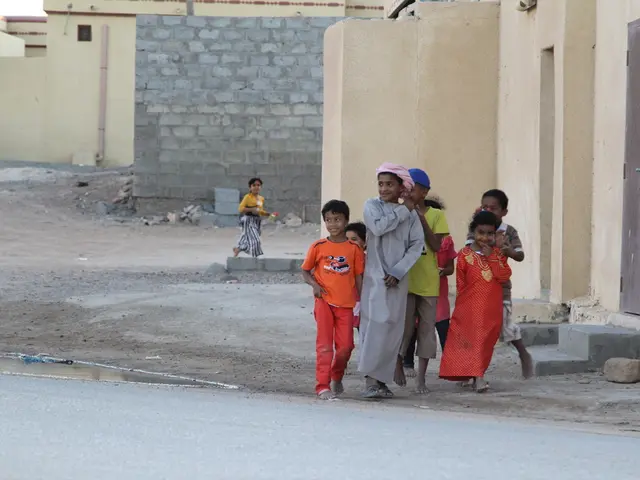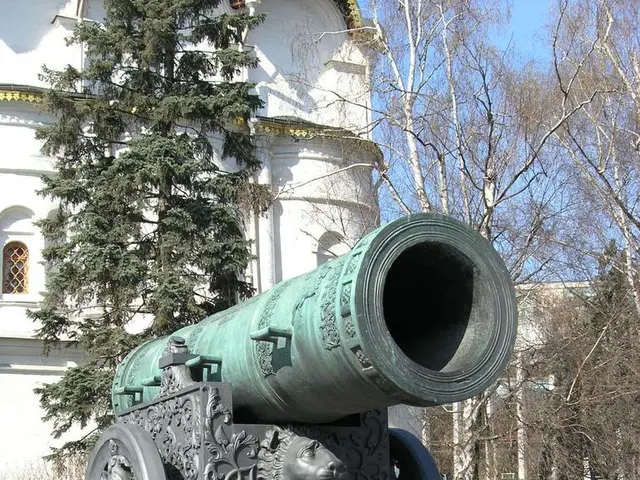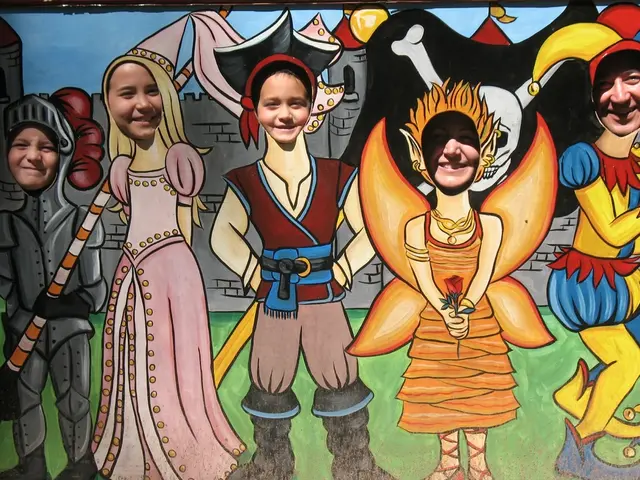AI system training using video surveillance footage for police work
In the bustling city of Hamburg, a new AI-assisted video surveillance system is set to be introduced, marking a significant step in the integration of technology into policing. The project, a collaboration between the Hamburg Police and the Fraunhofer Institute for Optronics, System Technology and Image Evaluation (IOSB), is scheduled to begin on September 1, 2025, at Hansaplatz in St. Georg and Hachmannplatz near the main train station.
The AI system, designed to support police officers in monitoring public places, pre-filters relevant images by converting people captured by the cameras into stick figures with vectors for the torso, head, and extremities. It checks whether the movements match predefined patterns to identify police-relevant situations.
The advancement of this AI-assisted video surveillance system has garnered support from various quarters, with Hamburg's Interior Senator Andy Grote (SPD), a former police spokesperson, the police vice-president and president, and spokespeople from the interior ministry among the media's frequently cited supporters. However, criticism grew loud during its first pilot phase in 2023 at Hamburg Hansaplatz.
The pilot project will use video footage from Hansaplatz in St. Georg and Hachmannplatz at the main station to train the AI system. Those who do not wish for their footage to be used for AI training are advised to avoid the specified places at the specified times.
Researchers from the University of Hamburg and the TU Chemnitz are examining the social impacts of AI-assisted video surveillance in a research project scheduled to run until 2026. The Hamburg Police and the Fraunhofer Institute for Optronics, System Technology and Image Evaluation (IOSB) are planning to expand the system's usage beyond the initial pilot phase, with potential locations including public transport, Jungfernstieg, or Reeperbahn already being discussed.
The system is intended to help police officers monitor sports and major events, providing them with a toolbox to inform themselves about AI use in policing. However, the ultimate use of the technology remains unclear, with the possibility of expanding it with further functions such as object recognition or tracking. Individual recordings can be stored until the end of August 2026.
The debate over the use of AI-assisted video surveillance in Hamburg has seen the SPD, CDU, and Greens expressing their support for the technology, while the Left party has voiced opposition. The media often cites conventional video surveillance at Hamburg Hansaplatz as a positive example of successful crime fighting since 2019. The scalability potential of the AI cameras has also been a focus of media attention.
As Hamburg moves forward with this innovative technology, it will be interesting to see how the AI-assisted video surveillance system evolves and contributes to public safety in the city.
Read also:
- Peptide YY (PYY): Exploring its Role in Appetite Suppression, Intestinal Health, and Cognitive Links
- Aspergillosis: Recognizing Symptoms, Treatment Methods, and Knowing When Medical Attention is Required
- Nighttime Gas Issues Explained (and Solutions Provided)
- Home Remedies, Advice, and Prevention Strategies for Addressing Acute Gastroenteritis at Home








